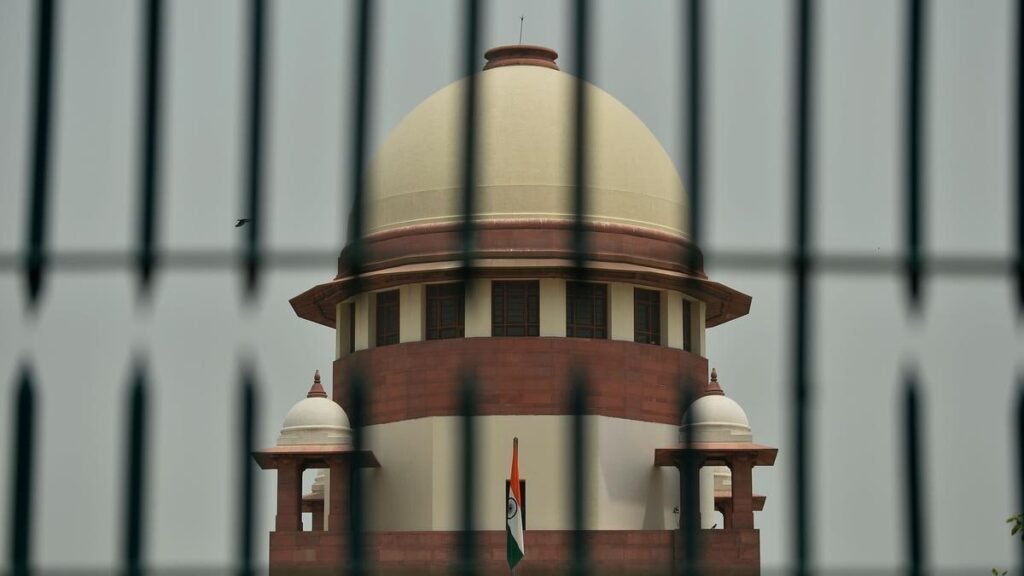
Why in News?
The Collegium System has come under scrutiny due to ongoing debates about its transparency, efficiency, and accountability, especially amidst delays in judicial appointments and increasing vacancies in higher courts. Recent tensions between the judiciary and executive, coupled with calls for greater diversity and structural reforms, have reignited discussions on its effectiveness. With India’s judiciary ranking 79th in the Rule of Law Index 2023, concerns over its opaque functioning and the need for codified procedures have gained prominence, emphasizing the urgency of addressing these challenges to uphold judicial independence and public trust.
Introduction
- India’s Collegium System is the mechanism for appointing and transferring judges to the Supreme Court and High Courts of India. It has evolved through judicial interpretations rather than explicit mention in the Constitution.
- Despite recent reforms aimed at addressing its limitations, challenges like governmental delays and lack of transparency persist.
What is the Collegium System?
- Definition: A mechanism for the appointment and transfer of judges in the higher judiciary.
- Constitutional Basis: Not explicitly mentioned in the Constitution; evolved through Supreme Court judgments.
- Composition:
- Supreme Court Collegium: Comprises the Chief Justice of India (CJI) and the four senior-most Supreme Court judges.
- High Court Collegium: Comprises the Chief Justice of the High Court and its two senior-most judges.
Constitutional Provisions for Judicial Appointments
- Article 124:
- Supreme Court judges are appointed by the President, in consultation with the CJI and other judges as deemed necessary.
- Article 217:
- High Court judges are appointed by the President, in consultation with the CJI, the Governor of the State, and the Chief Justice of the High Court.
- Government’s Role:
- Can raise objections or seek clarifications.
- Must comply if the Collegium reiterates its recommendations.
Evolution of the Collegium System
- First Judges Case (1981):
- Held that “consultation” with the CJI does not mean “concurrence”.
- Gave primacy to the executive in judicial appointments.
- Second Judges Case (1993):
- Overturned the First Judges Case.
- Redefined “consultation” to mean “concurrence”, giving the CJI a primary role.
- Introduced the Collegium System, requiring the CJI to consult two senior-most judges.
- Third Judges Case (1998):
- Expanded the Collegium to include the CJI and four senior-most judges.
- Stated that dissent by two Collegium members can halt a recommendation.
- National Judicial Appointments Commission (NJAC):
- Proposed via the 99th Constitutional Amendment Act, 2014.
- Composition: CJI (Chairperson), two senior SC judges, Law Minister, and two eminent persons.
- Struck down in 2015 by the Supreme Court for violating judicial independence and the basic structure doctrine.
- Memorandum of Procedure (MoP):
- A framework outlining procedures for judicial appointments.
- Remains unresolved despite revisions sought in 2015 to enhance transparency.
Key Benefits of the Collegium System
- Judicial Independence:
- Ensures independence by keeping the process free from executive or legislative interference.
- Upholds the judiciary’s role as a counter-majoritarian institution, protecting constitutional values and fundamental rights.
- Expertise-Driven Selection:
- Judges select appointees, ensuring meritocracy and judicial competence.
- Includes specialists in areas like constitutional law and commercial law.
- Insulation from Populism:
- Prevents appointments influenced by transient public pressures.
- Ensures impartiality in landmark cases like Puttaswamy Case (Right to Privacy).
- Flexibility and Responsiveness:
- Informal structure allows adaptability to emerging judicial needs.
- Recent reforms like interviews for candidates demonstrate willingness to address criticisms.
Key Issues with the Collegium System
- Lack of Transparency:
- Decisions are often opaque and lack publicly accessible criteria for selection.
- Raises questions about favoritism and undermines public confidence.
- Nepotism and Favoritism:
- Accused of perpetuating nepotism (e.g., “Uncle Judge Syndrome”).
- A 2015 report revealed that 50% of High Court judges were related to existing or former judges.
- Executive Delays:
- Delays in approving Collegium recommendations lead to judicial vacancies.
- Example: Over 60 lakh cases pending in High Courts, with 30% seats vacant.
- Lack of Diversity:
- Women constitute only 13.4% of High Court judges and 9.3% of Supreme Court judges (as of January 2024).
- Representation of SC, ST, OBCs, and minorities is less than 25%.
- Judicial Backlog and Inefficiency:
- Over 80,000 cases pending in the Supreme Court.
- Judicial inefficiency costs India 1.5% of GDP annually.
Proposed Reforms to the Collegium System
- Codification of Procedures:
- Formalize Collegium functioning with clear guidelines on selection criteria and decision timelines.
- Justice J.S. Khehar suggested consulting an advisory committee of eminent persons.
- Transparency and Accountability:
- Publish detailed records of Collegium discussions.
- Include the selection process under the RTI Act.
- Enforceable Time Limits:
- Introduce statutory deadlines for the executive to process recommendations.
- Enhancing Diversity:
- Mandate a minimum representation of women and marginalized communities in judicial appointments.
- Performance-Based Evaluations:
- Consider judicial track records, innovative rulings, and public trust as criteria for appointments.
- Leveraging Technology:
- Use Artificial Intelligence (AI) for managing data on eligible candidates and judicial vacancies.
Conclusion
- The Collegium System plays a vital role in maintaining judicial independence but requires significant reforms to address issues like transparency, accountability, and diversity.
- Balancing autonomy and accountability is essential for its evolution.
- A reformed Collegium system can enhance the judiciary’s credibility, efficiency, and public trust, ensuring justice delivery aligns with constitutional values.
Why is this Topic Important?
- Judicial appointments directly impact the rule of law and the justice delivery system in India.
- This topic is significant for exams due to its links with constitutional provisions, landmark judgments, and ongoing debates on judicial reforms.




